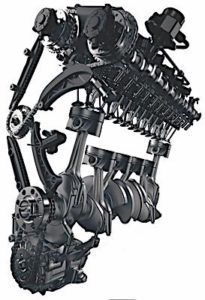If you’ve been waiting on the first license for the new GF-6 oils, prepare to keep waiting. This new oil spec that was first slated to be licensed later this year, and later postponed until April 2018, has now been projected to be delayed until 2019.
The International Lubricants Standardization and Approval Committee (ILSAC) developed the GF-6 oil specification in response to increased fuel efficiency standards put in place by the Obama Administration in 2012. The GF-6 specification was designed to allow for superior lubricant performance for next-generation engines in order to facilitate better fuel economy, enhanced wear protection and more robust fuel efficiency.
The GF-6 specification upgrade reflects the needs of new engine technology — specifically for gasoline direct injection (GDI) and turbocharged GDI engines. Protecting this hardware under harsher conditions and delivering higher fuel economy targets requires unprecedented lubricant performance, lubricant robustness, increased cleanliness and durability, and greater fuel economy throughout the entire oil change interval.
Gabe Rhoads, global passenger car business manager, Lubrizol Additives spoke with ImportCar magazine about what the delay of GF-6 means for repair shops and what technicians can do to prepare in the interim.
Q: What is the current state of the ILSAC GF-6 development?
A: There has been significant progress and test developers continue to work diligently on the proposed ILSAC GF-6 specification. However, the number and complexity of tests under development continues to push back completion of the GF-6 standard.
The new GF-6 specification includes an unprecedented seven new engine tests. Five tests are progressing through development, including the low-speed pre-ignition test; the timing chain wear test; the Sequence IIIH oxidation and deposit test; and the Sequence VIE and VIF fuel economy tests.
Two tests have proven particularly challenging to complete. The Sequence IVB test evaluates a lubricant’s ability to prevent wear in modern valvetrains. The Sequence VH test evaluates a lubricant’s ability to prevent engine deposit buildup, more commonly known as “sludge and varnish.”
Based on today’s progress, it is estimated that licensing will occur no earlier than spring 2019.
Q: What are the implications for the GF-6 delay?
A: New T/GDI (both gas direct injection and turbocharged gas direct injection) engine technology is becoming more and more commonplace. Today, there are over 26 million vehicles on the road in the U.S. with T/GDI engines. In 2024, vehicles equipped with T/GDI engines will make up nearly 83 percent of U.S. vehicle production.
Lubricants enable engine hardware and are a direct contributor to fuel economy. GF-6 will specify lubricants to help T/GDI engines reach full potential for performance and fuel economy. It will also address two performance challenges unique to T/GDI engines — low speed pre-ignition (LSPI) and accelerated timing chain wear.
T/GDI engines operate at sustained high temperatures and pressures. While great for fuel efficiency, this environment can lead to a phenomenon called low-speed pre-ignition, an abnormal combustion that can lead to engine failure if left unchecked. T/GDI engines also produce a unique carbonaceous contaminant that causes soot and contributes to accelerated timing chain wear.
Once GF-6 is complete, vehicle owners will have access to more lubricants designed for T/GDI engines.
Q: Are drivers aware of LSPI?
A: Not generally, even though OEMs have begun to see more performance issues in the field related to LSPI. Most drivers with a T/GDI engine are unaware of LSPI and the catastrophic engine failure that it can cause.
Actually, to a driver, LSPI can resemble traditional engine “knock,” a common issue seen in older vehicles. LSPI is an abnormal engine combustion that can cause severe damage to an engine. But often, LSPI goes undetected until it is too late. For that reason, it has become critical that OEMs and vehicle owners have immediate solutions.
Q: Are solutions for LSPI currently available?
A: Although GF-6 is delayed, Lubrizol and some OEMs have already brought solutions to the market to mitigate LSPI.
These solutions include advanced additive technology solutions specifically designed to address LSPI and chain wear performance throughout the oil drain interval, all while maintaining GF-5 requirements.
Q: What can service shops do to ensure drivers are getting the right lubricant?
A: We understand the important role technicians play in guiding their customers’ lubricant selections. One of the most effective messages for vehicle owners is that advanced T/GDI engine technology requires advanced lubricant technology. We encourage shops to stock engine oils that protect against LSPI and accelerated timing chain wear in preparation for the growing number of T/GDI engines on the road.
Q: Are there ways to avoid delays like GF-6 in the future?
A: The prolonged delay in GF-6 serves to highlight the need for a change in how engine oil specifications are developed, used, deployed and licensed in a broader sense. The current process is complex, slow moving, expensive and often lags behind advancements in engine technology.
OEMs and vehicle owners may have real engine performance needs that cannot wait for the traditional specification development process. Developing lubricant technology in tandem with engine technology would be a significant improvement and would help to avoid the delays seen with GF-6.
OEMs have a vital need for higher performing lubricants to be available when advancements in engine technology occur. For that reason, OEMs are expected to develop their own proprietary specifications as GM has done with dexos1 Gen 2.














